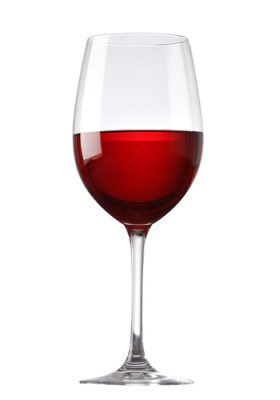Cheers! Five Surprising Facts About Alcohol and Your Heart

Know the Risks & Benefits of Your Cup of Cheer
Before you raise your glass, you should be aware of some important ways that alcohol affects your heart. For example, did you know that:
- in the hour after alcohol consumption, a person’s risk of stroke and heart attack doubles?
- potentially dangerous arrhythmias can result from too much holiday cheer, a condition that has come to be known as Holiday Heart Syndrome?
- moderate alcohol consumption on most days of the week may help guard against heart disease?
These are some of the key discoveries that have emerged from the Cardiovascular Epidemiology Research Unit (CVERU) at Beth Israel Deaconess Medical Center (BIDMC). In conjunction with the Harvard T.H. Chan School of Public Health (HSPH), the CVERU conducts observational and experimental research to identify risk factors for heart disease. Under the direction of Murray Mittleman, MD, DrPH, the CVERU is nationally recognized for its many studies examining how alcohol consumption impacts cardiac health.
“Whether alcohol protects us from heart disease or promotes heart disease depends on a number of key factors,” says Mittleman, who is also a preventive cardiologist in BIDMC’s CardioVascular Institute and Professor of Epidemiology at HSPH. “These include the amount of alcohol consumed and the frequency of consumption.”
Either way, the take-home message is the same: If you do drink, do so in moderation. That means no more than one drink per day for women and no more than two drinks per day for men, according to guidelines from the American Heart Association. A drink is defined as 12 ounces of beer, four ounces of wine, 1.5 ounces of 80-proof spirits, or one ounce of 100-proof spirits.
Five facts to keep you healthy:
1. The Not-So-Happy Hour
A large study by BIDMC researchers published earlier this year reported that in the hour following alcohol consumption, a person’s risk of having a stroke or heart attack actually doubles. Led by Elizabeth Mostofsky, ScD, MPH, a scientist in BIDMC’s CVERU, the comprehensive meta-analysis (a study of studies) analyzed data from 23 studies conducted between 1966 and 2015, involving a total of 30,000 participants. The goal was to better understand a person’s risk of having a stroke or heart attack in the hours and days after consuming alcohol.
“It’s a complicated subject,” says Mostofsky, who is also an instructor at HSPH. “The fact is that alcohol has complex physiological effects that can result in both higher cardiovascular risk and lower cardiovascular risk. We found that any alcohol consumption raised a person’s risk of a heart attack or stroke approximately two-fold within the hour following consumption compared to other times. After 24 hours, though, only heavy alcohol intake conferred a continued heightened risk. “
Immediately following alcohol intake, heart rate increases, blood pressure rises and blood platelets become stickier. This may increase the risk of heart attack and stroke. But over time, regularly drinking small amounts of alcohol appears to lower cardiovascular risk by increasing levels of high-density lipoprotein (HDL) cholesterol, the so-called “good cholesterol,” while also reducing a person’s tendency to form blood clots.
“Based on our results, it is possible that the brief risks we see right after drinking alcohol are outweighed by the health benefits of regularly drinking modest amounts of alcohol,” says Mostofsky.
2. Holiday Heart Syndrome
You may associate the term “binge drinking” with a college fraternity party, but it actually refers to any episode of excessive drinking. This is defined by the U.S. Office of Disease Prevention and Health Promotion’s 2015 Dietary Guidelines as 15 drinks or more per week for men and eight drinks or more per week for women.
One of the greatest risks develops when people who don’t usually drink at all find themselves celebrating at parties or “binge drinking” while on vacation, a problem that was first identified almost 40 years ago and is now often referred to as “holiday heart syndrome.”
A BIDMC study of both men and women of an average age 50, found that heavy drinking — 35 or more drinks per week — led to a 45 percent increase in men’s risk of developing atrial fibrillation, a dangerous type of arrhythmia and a leading risk factor for stroke.
In cases of atrial fibrillation, the heart’s upper (atrial) chambers do not adequately contract, creating a situation in which blood can collect and clot. If a blood clot travels to the brain, it can cause a stroke.
According to the American Heart Association, atrial fibrillation is responsible for approximately 15 to 20 percent of all strokes.
In the BIDMC study, the researchers found that the risk of developing atrial fibrillation begins to increase at about four drinks per day, and clearly goes up at five drinks a day.
“This would seem to confirm what has long been suspected regarding periods of heavier-than-normal alcohol consumption, such as over the holidays or during vacations,” says Mittleman.
This is a paid partnership between Beth Israel Deaconess Medical Center and Boston Magazine


